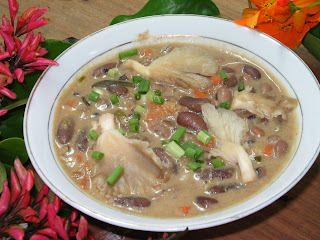Nutrients Found In Plant Food
By Nona Lema
Nutrients refer to all things that make up how healthy food is - - like vitamins, minerals, carbohydrates, protein and fats. My advice to everyone in general is, always incorporate a variety of fruits and vegetables in your meals. This is the best way to ensure that you are getting enough of many nutrients.
Sometimes, it can be mind-boggling the way daily nutritional requirements are written. If you’re like me, who go crazy with all the nutritional statistics and figures, then the best thing to remember is this: have a ‘balanced’ amount of all the different types of natural food available in nature - -that’s all. Make sure to eat a daily serving from each food group such as whole grains, fruits, vegetables, nuts and legumes. Very simple formula. You can never go wrong that way.
Now, speaking of nutrients for PD patients, experts say focus on calcium and vitamin D (for maintaining bone health) and antioxidants (for helping reduce the loss of dopamine-producing neurons).
In other words, feed them all things naturally healthy but most specially foods that are rich in calcium and antioxidants.
Good sources of calcium are: dairy, green leafy vegetables, almonds, pistaccio, molasses, wheat, brewer’s yeast, broccoli, cabbage, okra, carob, oats, sesame seeds, turnips and tofu.
Good sources of antioxidants are: nuts, dark-colored fruits, leafy green vegetables, tomatoes, broccoli, red kidney beans, pinto beans.
Experts say an average adult need 1000-1500 mg of calcium and roughly the same amount of antioxidants a day.
To translate, for breakfast serve the PD patient an average serving of hot or warm milk, or fruit milk shake or fruit smoothie such as banana, avocado, papaya, melon, etc. One important thing you should remember about milk is that it is best to be boiled first in order to predigest it so it is easily absorbable. So in milkshakes/smoothie, boil the milk first, let it cool before blending with the fruits.
The worst thing to take is cold milk, as in the form of iced milk shakes or drinks. These are actually modern Western concoctions that have no bearing in eastern nutritional and medicinal food. Cold milk is not only hard to digest, it is also mucus-forming. Milk drinks should always be taken hot or warm.
In oatmeal or cereals, boil the milk first before adding the oats or cereals. For sweetener try switching to molasses.
For variety you can also serve grilled cheese or just plain cheese sandwich; or pasta with cheese or yoghurt and fruits - -always have a lot of fruits. Interchangeably, serve fried/plain rice with tofu or tokwa and different kinds of gulay dish.
For lunch and dinner: As a rule, have a variety of talbos/dahon every mealtime - - talbos ng kamote, sili, ampalaya, kalabasa, sayote, sitaw; dahon ng malunggay, kangkong, alugbati, talinum, spinach, etc. Serve them as native vegetable salad or sabaw (soup). In your regular ginisang gulay or ginataang gulay, grain/pasta or noodle dish, always incorporate some form of leafy vegetable. And then for added flavor, nutrients and texture, add tofu or tokwa.
Tofu or tokwa is the best meatless substitute. It can be mixed in sauces, pasta, chilis, stirfries, etc because it is so close in texture to meat and a rich source of nearly all nutrients that your PD patient needs.
For PD patients the best way to have nuts or seeds is to have a sprinkling of it.
In my family, one favorite regular table item is ‘sesame salt’ or ‘peanut salt’. To prepare this, roast one cup of sesame seeds or fry one cup of peanuts. Blend in a blender with a little salt. Put in a shaker or small bottle container. Sprinkle on your rice and pass around during mealtime. My children just love it. An appetizing and nutritious way to have your daily dose of calcium and antioxidant without your even knowing it!
And then for dessert you can have blueberries. Blueberries are a little bit expensive but once in a while have them in muffins or pies or tarts. Again, a delicious way of ensuring that your PD patient gets their needed nutrients. Of course our wide variety of local fruits may also be prepared in so many delicious dessert dishes. So as I have said before, try to be creative about it.
And lastly, In one vegetarian cookbook written by Jeanne Lemlin, she mentioned some tips about the ‘secret to a relaxed cooking’. I’d like to share them with you. She says: “have all the ingredients you will need gathered together in front of you. Have all the dishes or pans taken out. Have all the precooking done ahead of time, for example, peeling and chopping of vegetables, measuring, etc.” To which I’d like to add: take a deep breath and pause for a minute of relaxation.



No comments:
Post a Comment